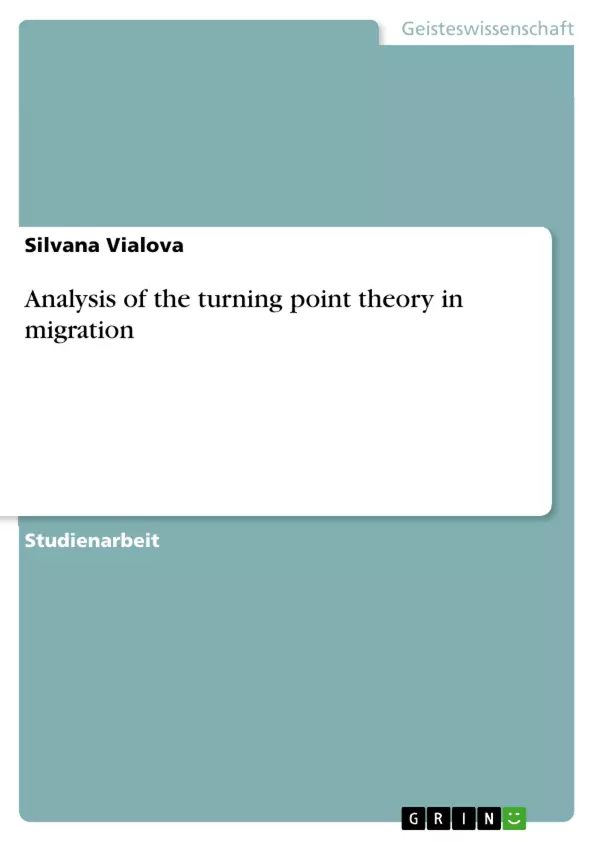People are migrating with the hope of gaining a better well-being outside of their home country, thinking that while being abroad, they will be able to find what their own country cannot give them. As Indonesia is the fourth most populous country in the world there are of course many citizens with different ideas about what well-being means. But it can be supposed that quite a high number is not satisfied with Indonesia as a home country due to the rising numbers of emigrants over the years. Neither, a declining fertility rate, nor rising education, an improving health system or a better transportation system could stop this trend so far, although scientists entitled the country as a “sleeping giant” just waiting to awake (Tirto-sudarmo 2003: 4). The crucial question now to ask is, when Indonesia is going to awake, when the immense outflow of labour migrants will stop, the economy will develop and the people will decide to rather stay in their country than to leave – when will Indonesia receive more migrants than it is sending?
Scientists analyzing this process of change have developed a theory for migration transition that tries to explain under which circumstances a country can become a migrant receiving one and which different stages it has to undergo. The one I am referring to in this paper has been developed by Tsai and Tsay. Focusing on Indonesia as a migrant sending country I want to deal with the question in what extent the turning point theory of Tsai and Tsay is able to explain Indonesian migration flows to other countries.
In the first part I want to describe the turning point theory developed by Tsai and Tsay in detail. After that I will cater to three different examples that influence the Indonesian migration process. First I will give an insight into Indonesian migration policies, and then discuss phenomena such as the financial crises, social unrest and natural disasters, and thirdly I will examine more in depth some of the reasons for which people migrate and their most common destination countries. In the third part the migration theory is applied in case of Indonesia and its location within the theory is defined. The following part illustrates the deviations of the theory as well as some of its criticisms. And in the end I will draw a concluding picture of the theory and give an outlook to its potential
possibilities.
Inhaltsverzeichnis
- Introduction
- Turning point theory
- Labour migration flows from Indonesia
- Migration policies in Indonesia
- Movements, Naturals Disasters, Economic Situation
- Migration Patterns
- Locating Indonesia within the Turning Point Theory.
- Difficulties of the Turning Point Theory.
- Conclusion
- Literature index
Zielsetzung und Themenschwerpunkte
Dieser Beitrag untersucht die Anwendbarkeit der Turning Point Theory von Tsai und Tsay auf Indonesien im Kontext der Arbeitsmigration. Der Fokus liegt auf der Analyse, ob die Theorie die Migrationstrends in Indonesien hinreichend erklären kann.
- Die Turning Point Theory von Tsai und Tsay
- Migrationsströme aus Indonesien
- Indonesiens Positionierung innerhalb der Turning Point Theory
- Schwierigkeiten und Kritikpunkte der Turning Point Theory
- Potenzial der Turning Point Theory
Zusammenfassung der Kapitel
Die Einleitung stellt die Relevanz der Untersuchung dar, indem sie den hohen Auswanderungszahlen aus Indonesien und die damit einhergehende Suche nach einer Erklärung dieser Entwicklung beleuchtet. Im ersten Kapitel wird die Turning Point Theory von Tsai und Tsay detailliert beschrieben, wobei die drei Phasen der Entwicklung eines Landes von einem reinen Auswanderungsland zu einem Einwanderungsland beleuchtet werden.
Kapitel zwei konzentriert sich auf die Migrationsströme aus Indonesien, wobei zunächst die indonesischen Migrationspolitiken, dann die Auswirkungen von Naturkatastrophen, Finanzkrisen und sozialer Unruhen sowie schließlich die Gründe für die Migration und die beliebtesten Zielländer behandelt werden.
Im dritten Kapitel wird die Turning Point Theory auf Indonesien angewandt und die Position des Landes innerhalb des theoretischen Modells definiert.
Kapitel vier widmet sich den Abweichungen der Theorie von der indonesischen Realität und präsentiert Kritikpunkte an der Turning Point Theory.
Schlüsselwörter
Die zentralen Schlüsselwörter und Themengebiete dieses Textes umfassen die Turning Point Theory, Arbeitsmigration, Indonesien, Migrationsströme, Entwicklungsstadien, Auswanderung, Einwanderung, Remittances, Wirtschaftsentwicklung, Kapitalzufluss und politische Einflussfaktoren. Die Untersuchung beleuchtet die Interaktion dieser Faktoren im Kontext der indonesischen Arbeitsmigration und deren Einordnung in die theoretischen Rahmenbedingungen der Turning Point Theory.
- Quote paper
- Silvana Vialova (Author), 2015, Analysis of the turning point theory in migration, Munich, GRIN Verlag, https://www.grin.com/document/340216



